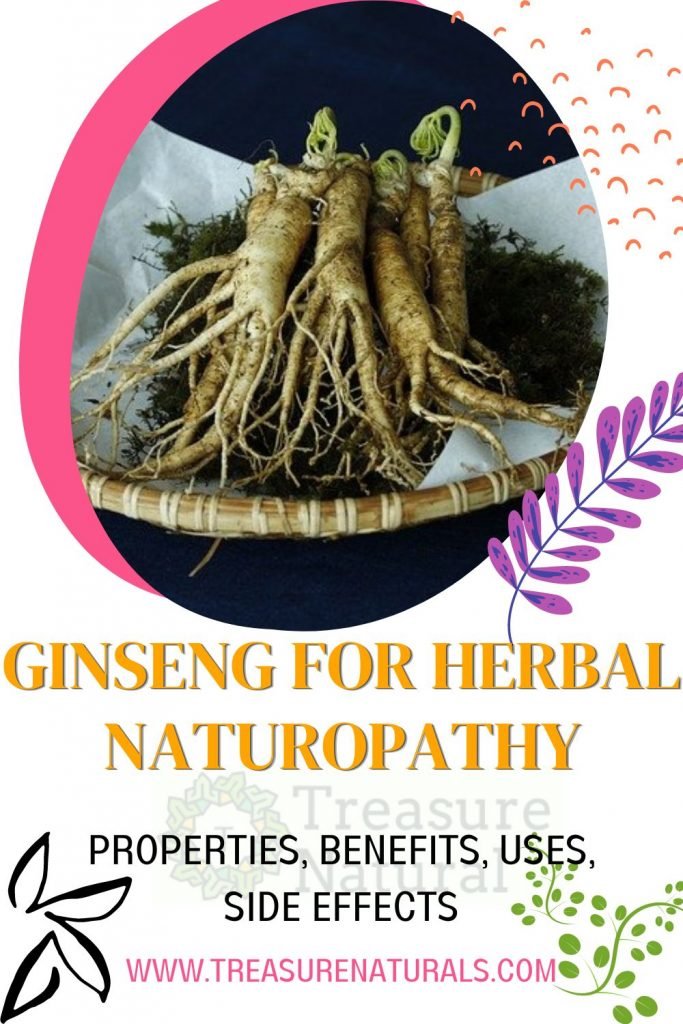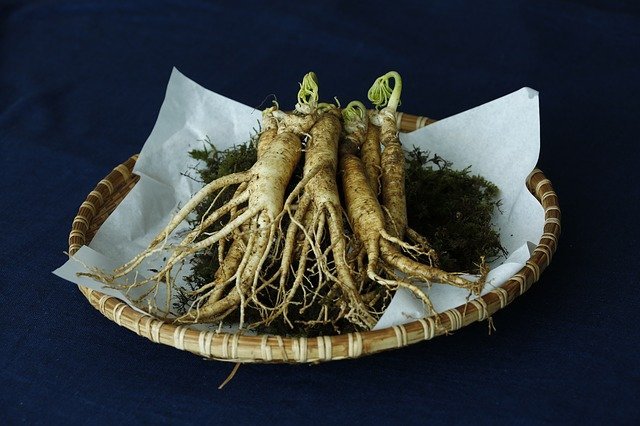
Ginseng has adaptogenic properties and is useful for coping with stress and fatigue. Here is how and when to take it and what are its contraindications.
Ginseng (Panax ginseng) is a plant belonging to the Araliaceae family, which grows wild in Nepal, Korea, Eastern Siberia, where it is also cultivated. Ginseng root is known for its adaptogenic and anti-stress properties, and is also used for the treatment of diabetes mellitus, thanks to its hypoglycemic action.
What is ginseng?
Ginseng is a perennial herbaceous plant, erect, which can reach fifty centimeters in height. Also known as Korean ginseng, Chinese ginseng and asiatco ginseng, this species has a hairless stem that bears five-leaf pinnate-lobed leaves. The flowers are white and gathered in umbrellas while the fruit is a red berry. The root is tuberized, fusiform and fleshy, and resembles the shape of the human body.
Native to East Asia (mainly Korea, North China and Eastern Siberia) and North America, it typically develops in colder climates. The Vietnamese species of Panax is the most commonly used.
Traditional Uses of Ginseng
The term ginseng comes from the Chinese rènshēn, or “plant of Man“. This is because, according to the theory of signatures, the shape of its root resembles that of the human body with ramifications that suggest the shape of the limbs, head, sexual attributes etc. The artisan farmers who are able to reproduce these shapes in a better way are able to tick off respectable prices at the sale.
Traditional Chinese medicine considers the plant an elixir of youth that possesses all the therapeutic, preventive, curative and energetic virtues imaginable; and it seems that this has been happening for millennia, because ginseng appears in the oldest medical treatises, at the beginning of the Christian era.
Traditionally, ginseng is finally considered an aphrodisiac food useful for stimulating sexual desire and functions, especially in men. These properties are attributed by traditional Chinese medicine especially to red ginseng. It is not a different botanical variety, because its coloring is due to the heat treatment of the root before proceeding with drying.
Types of ginseng
There are several types of ginseng:
- Korean ginseng (Panax ginseng C.A. Meyer), considered the most active because it contains 38 different gynosenoids. It has hypoglycemic properties (it is therefore beneficial for diabetes) and adaptogenic (this means that it helps the body to withstand physical and mental pressure). It has been successfully tested on both the elderly and sportsmen.
- Chinese ginseng (Panax notoginseng Burk) which performs adaptogenic and hypoglycemic action. It is also considered a powerful tonic.
- American ginseng (Panax quinquefolius L.), capable of regulating cortisol levels (the stress hormone) and reducing cytokines. Its healing properties have also been tested with cancer patients undergoing chemotherapy and radiotherapy.
- Siberian ginseng (Eleuterococcus senticosus Maxim), recommended for students during exam periods for its ability to relieve mental fatigue.
Recommended doses
The recommended doses for ginseng extract or infusion depend on the type of ginseng and should be evaluated with the guidance of an herbalist. Here are some guidelines:
- Korean ginseng: in dry extract 400/500 mg per day; in tincture 30 drops 1 or 2 times a day.
- Chinese ginseng: in dry extract 400/500 mg per day; in tincture 30 drops 1 or 2 times a day.
- American ginseng: in dry extract 400/500 mg per day; in tincture 30 drops 1 or 2 times a day.
- Siberian ginseng: in dry extract 400/800 mg per day; in tincture 30-40 drops in a little water in the morning.
Ginseng in herbal medicine
Ginseng can be administered in the form of an infusion, putting in decoction for about ten minutes one or two grams of dried root for each cup of water. Most commonly, titrated dry extracts are used, available in herbal medicine.
Ginseng has tonic and adaptogenic properties, therefore it promotes the body’s ability to adapt to periods of strong physical and mental stress and counteracts asthenia and fatigue.
Thanks to its immunomodulating action, it supports the body:
- during seasonal changes;
- with excessive cold and too hot;
- in very busy periods;
- against the attack of viruses and bacteria.
It also prevents physical and mental exhaustion and the onset of diseases.
The tonic and adaptogenic properties of ginseng are useful for improving concentration, memory and physical rest, and make this remedy indicated to face study, too much work and intense sports activity.
The virtues of ginseng are attributed to several components present in the lateral roots of this plant. In addition to a good content in vitamins, mineral salts, amino acids, essential oil and polysaccharides (including panaxanes), in ginseg there are triterpene saponins called ginsenosides, mainly responsible for its healing properties.
Ginsenosides, in fact, are able to act on the neurendocrine and neuromuscular system, stimulating the hypothalamic-pituitary-adrenal axis and inhibiting the reuptake of certain neurotransmitters and reducing cortisol levels, known as the “stress hormone” precisely because it is released in response to stressful events.
Triterpene saponins also have a hypoglycemic action. For this reason, ginseng is also a valid remedy in case of diabetes.
Effects

The intake of ginseng is contraindicated in case of allergies to one or more components and during pregnancy and lactation, since no specific studies are available on these particular stages of the woman’s life.
The side effects of ginseng, if the use is prolonged and at high dosages, are high blood pressure, tachycardia, palpitations, insomnia, anxiety, tremors and diarrhea. In any case, the administration should not be prolonged beyond three consecutive months and should be avoided after 16-17 as it may interfere with rest.
Ginseng can interfere with certain medications including anticoagulants, antidrepressants, and central nervous system stimulants. If you are taking other medicines or supplements, it is good to inform your doctor, pharmacist or herbalist.






